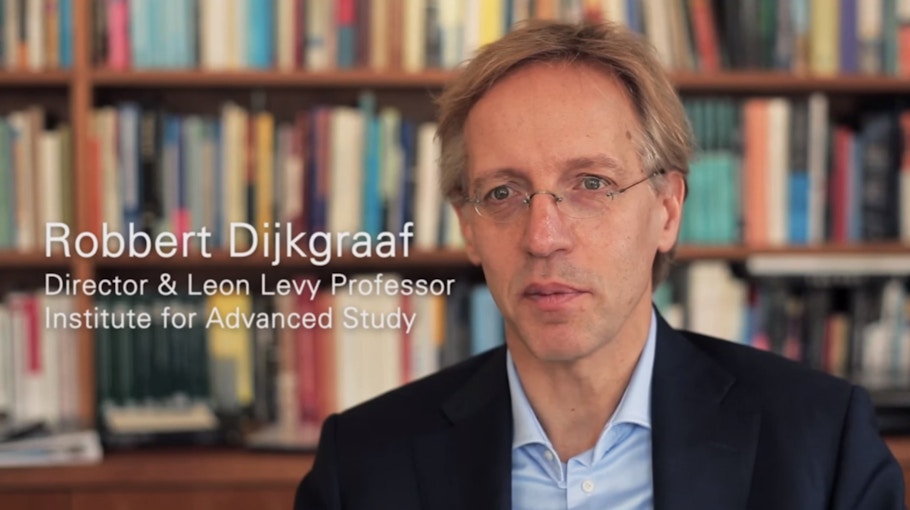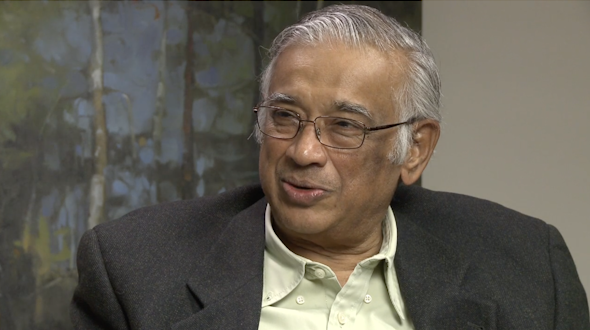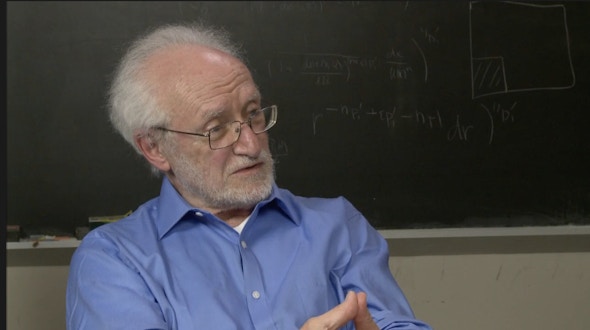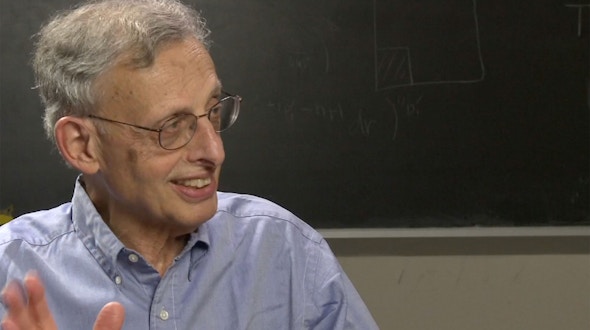Robbert Dijkgraaf
When Robbert Dijkgraaf was 15 years old, he read his first article about elementary particle physics in Scientific American.
“From that moment I was hooked,” Dijkgraaf says.
He read everything he could find at his school library on science and physics. When he ran out of material there, he turned to the local university, checking out books on relativity and quantum mechanics.
“To my amazement, I could understand all the new stuff I was learning,” says Dijkgraaf. “It’s one of the wonderful things about mathematics. Equations speak out to you, and if you understand them, there are basically no limits for what you can study and understand.”
What drew him to the world of mathematical physics, Dijkgraaf explains, was the fundamental fact that all the structure we see around us — all the natural beauty, order and disorder — can be explained by mathematical equations. He discovered that the deepest way to describe the underlying science of nature is through the advanced mathematical equations that explain how it works.
“I got this feeling that deep mathematical facts must also express something deep about nature,” he says.
Dijkgraaf went on to earn a doctorate in theoretical physics at Utrecht University, studying under the Nobel laureate Gerard ‘t Hooft. He became a tenured professor at the University of Amsterdam, enjoyed a brief career as a painter, launched a Dutch television program aimed at educating the public about science, and was named director of the Institute for Advanced Study in Princeton, New Jersey, all the while writing prolifically about science and society.
“Robbert has an amazing ability to frame physical ideas in precise and elegant mathematical terms,” says Cumrun Vafa, a professor of physics at Harvard University and a collaborator of Dijkgraaf’s. “That often leads to improved understanding of both physics and mathematics.”
Dijkgraaf’s work focuses on the interface between particle physics and mathematics. Together with Vafa, he has uncovered deep and unexpected connections between three subjects: matrix models, which are physical systems composed of a collection of matrices; topological string theory, which describes surfaces in complicated space-times; and supersymmetric quantum field theory.
Quantum field theory is fundamental to our current understanding of particles and forces. While the basic rules and structure are known, it remains difficult to make specific computations and produce exact answers to physical questions such as the strength of interactions among particles.
Supersymmetry is a theorized symmetry that relates two basic classes of elementary particles, which are roughly the components of matter and radiation. A powerful tool, supersymmetry allows researchers to obtain exact mathematical answers to questions in quantum field theory. What’s more, it may be present in nature, providing explanations to some of the puzzles of particle physics as well.
Dijkgraaf and his collaborators discovered that the Feynman diagrams of supersymmetric gauge theories — images that describe the motion of particles in space-time — could be captured by much simpler matrix models. The calculations used to translate particle physics diagrams into matrix models were also equivalent to string theory amplitudes.
The equivalence of these three frameworks allowed the researchers to solve equations exactly. In particular, the string theory reformulation gave rise to a geometric understanding of the physical solution. Remarkably, that geometry was not originally present but emerged spontaneously out of the calculations.
“This was extremely rare and important because once you identify a problem in a complicated system that you can exactly solve, it can turn into a tool to probe the system,” Dijkgraaf says. “You can learn lessons that you hope can generalize to a wider context.”
In addition to his work at the intersection of quantum physics and mathematics, Dijkgraaf developed formulas that explain the entropy of some black holes that appear in string theory.
One of the outstanding problems in physics is a quantum mechanical description of black holes: What physical states can a black hole be in, and how are they encoded in the geometry of space-time? The Bekenstein-Hawking formula provides a rough measure for the amount of information lost when a black hole forms. According to that formula, the information is encoded as the area of the black hole’s horizon — the surface surrounding the black hole, beyond which everything is unavoidably pulled into the singularity.
Dijkgraaf and his collaborators created a formula that precisely identifies the number of quantum states of a certain class of black hole. The formula, Dijkgraaf found, matches the entropy formula, but goes further and creates a microscopic understanding of a black hole within a theory of quantum gravity. The formula turned out to have an elegant and deep mathematical structure.
“It is a remarkable phenomenon,” Dijkgraaf says. “You’re trying to describe the internal structure of this mysterious physical object and this rich underlying symmetry emerges.”
While Dijkgraaf’s career has focused on the complex interactions between particle physics and advanced mathematics, in recent years he has become dedicated to making science accessible to a wider audience.
From 2008 to 2012 Dijkgraaf served as president of the Royal Netherlands Academy of Arts and Sciences, and since 2009 he has been co-chair of the InterAcademy Council. The two organizations aim to advise policymakers and promote understanding of the hard sciences among the general public.
He has made frequent appearances on Dutch television and written monthly newspaper columns along with several books for general audiences. His goal is to foster education on the interface between science and society.
“It’s wonderful that Robbert has been using his talent in new directions to do science education and broader policy,” Vafa says. “First-rate scientists are seldom in such a position, and I’m glad to see such a great science communicator involved in educating the public.”
Dijkgraaf looks forward to what the future might hold as he continues both his research and his outreach efforts.
“Every morning you have an empty page where you can write new things and learn new ideas,” he says. “We’re touching something quite essential about the universe that has been there for ages, but that we’ve only recently discovered.”



